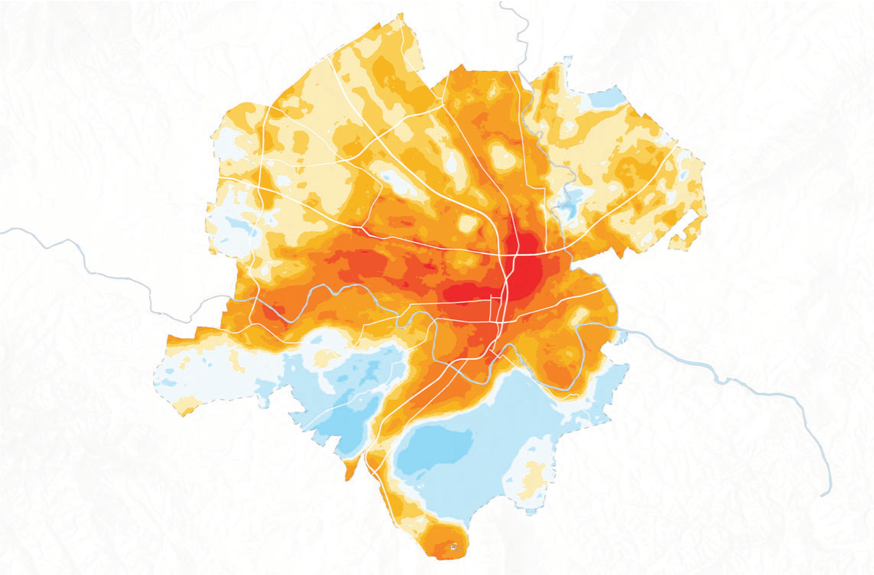Background
Climate change is increasing the frequency, intensity, and duration of heat waves and is expected to increase their impact on human health and the economy. Community planning interventions can help communities stay cool. Community planning interventions can include:
- Community-recognized resilience hubs - which might provide safe air conditioned spaces to stay, access to water, and shade
- Increased green infrastructures - such as park spaces, trees, and vegetation
- Other public infrastructure improvements, such as cool pavements, splash pads, and shade infrastructure to help people stay cool outdoors
- Public education and information about the risks of heat and resources
- Coordination with emergency services
However, community capacity and trust must be built in a way that recognizes lived experiences of historically marginalized communities.

In 2020, the City of Roanoke conducted an urban heat mapping campaign. This map shows that there may be temperature differences of >10 degrees F across the city. The hottest areas of the City are those that are impacted by many other social and environmental stressors.
H.O.P.E. Approach
H.O.P.E. stands for Healing Our People with Empathy. In the planning phase of our project, we realized that the communities that are most vulnerable to the risks of increased temperatures are also the communities that must simultaneously deal with many other social and environmental stressors: poverty, lack of affordable housing, food insecurity, policing and mass incarceration, and gun violence, to name a few. With such pressing issues in people’s’ day-to-day lives, how do we simultaneously raise longer-term, and perhaps less recognized, impacts of the impacts of climate change, which are already making many of these issues worse?
The project aims to create social and digital infrastructures for community resilience to extreme heat through deploying youth technology, arts, and urban planning programs in partnership with city government and existing community development and faith organizations.

Trauma and Healing
In the realm of urban planning, acknowledging the intersections of individual and collective trauma becomes pivotal for fostering inclusive and resilient communities that promote the healing and empowerment of residents. In this project, we embrace trauma-informed, healing-centered approaches through a deep recognition of historical and ongoing systemic marginalization, poverty, and displacement and the upcoming urban challenges that communities will face amidst changing climate conditions. We believe that our efforts should be focused on collaborative knowledge co-creation with community leaders and the incorporation of healing-centered approaches in designing urban spaces that support holistic healing. In this approach, we underscore the need to create urban city spaces by prioritizing community engagement, safety, equity, and choice. Additionally, we wish to not only recognize physical sites of collective trauma but also strive to ensure that existing and future physical infrastructure supports a sense of belonging in the community. In adopting a trauma-informed urban planning process, we advocate that the reparation of historical planning and policy harms should be rooted in amends, recognition, respect, and reform.
Project Activities
The following are the main activities of the H.O.P.E. for Heat Resilience project:
- Piloting and evaluating a new method, The Roanoke Method, of resilience planning, which is a grassroots process of deep community engagement that starts with youth and the organizations that work with youth in the City of Roanoke, and takes into account trauma-informed, healing centered principles
- Producing repeatable youth programs in arts, spirituality, and STEM that connect to the City’s urban planning processes
- Training 8 high school students that identify with the African American community in Roanoke in community planning, so they can plan for futures of their own neighborhoods
- Building a website to host all products of the project and show how they connect to community plans for the future